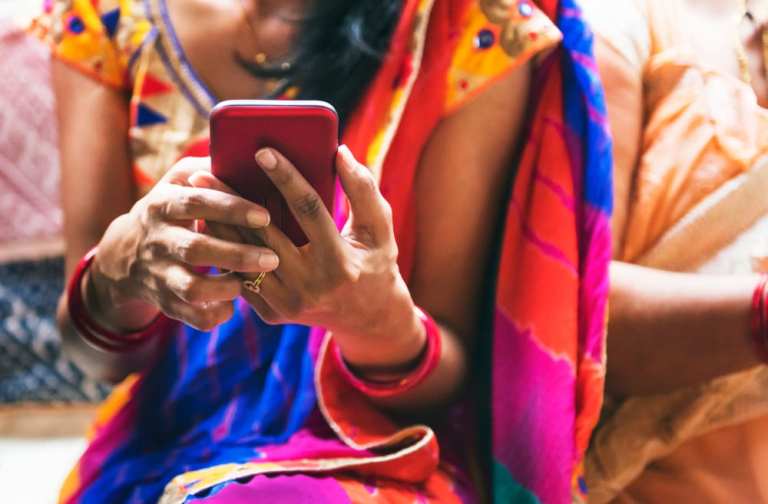
The digital transformation of India’s payments landscape is underway, through government mandate, and a slew of banking and FinTech players. Jeremy Wilmot, group president at ACI Worldwide, tells Karen Webster that greenfield opportunities exist in a marketplace featuring more than 1 billion consumers, tech-savvy and armed with the will — and through mobile devices — to transact in bits and bytes.
The world has a ringside seat to the digital transformation that is happening in India in real time. The movement away from cash is an inexorable one, aided by government mandate, a confluence of technology and stakeholders (from banks to payment service providers), and a greenfield of more than 1 billion consumers willing and able to transact in bits and bytes.
In an interview with PYMNTS, Jeremy Wilmot, group president for on premise and cloud P&L at ACI Worldwide, told Karen Webster that a convergence of public, digital and even physical conduits is reshaping the B2B payments landscape.
There still exists a lot of runway, of course, as India remains a cash-intensive economy, where 90 percent of transactions are still done through hard currencies.
That said, the evolution has been rapid, from a standing start only three years ago. There are some projections that, by the end of 2020, the equivalent of $500 billion in transactions will be done electronically, representing 15 percent of the gross domestic product (GDP). There are also as many as 89 nonbank players striving to drive forward the digital transformation of commerce.
Why The Ecosystem Is Coming Together
Wilmot said the “clear, centrally driven mandate” from the administration of Prime Minister Narendra Modi that has been in place for several years has been a key driving force. Modi’s reelection just weeks ago cements that ambition, and ensures its continuance. Entities such as the National Payments Corporation of India — an umbrella organization for operating retail payments in India — have been helping to guide electronic payments adoption.
He said, too, that security is key, and that Aadhaar (the 12-digit unique identity number) and biometric technologies, including facial recognition and unique identifier numbers that can be used in conjunction with mobile devices, are fostering a sense of trust among users. “There is a clear, common understanding among the large Indian banks,” said Wilmot, “that fraud and securing transactions is a common need, a common good,” especially in fostering greater financial inclusion.
In many ways, observed Webster, the efforts specific to India mirror what other countries are trying to do. However, more developed nations have been relatively constrained by legacy technologies and entrenched ways of conducting commerce.
India, in contrast, has a huge point of leverage in embracing digital payments — namely, the power of mobile devices. Wilmot pointed to the fact that there are more than 1 billion mobile devices in the field, and 900 million current accounts in place with private and public sector banks. In addition, digital payment initiatives are leveraging Open API and real-time rails with mobile devices, enabling what he called “development of digital overlay services at the mobile device. … This enables the very fast adoption you’re seeing in India.”
Driving Consumer Adoption
To drive consumer adoption, beyond building an ecosystem to facilitate digital payments, Wilmot said a “carrot and stick” approach has been in place, where the stick has been the demonetization process that started in 2016. The carrot is the convenience available with new digital payment methods that ride the rails of the Unified Payment Interface (UPI).
The trust is fragile, though. As Wilmot said, if consumers find the apps do not work (and they must work every time), they will revert to cash. The high penetration of smartphones, however, also means that educational efforts to foster adoption can spotlight the ways smartphones can be used to enhance trust in security, and drive adoption. He pointed to one-time passwords and interactive text capability as examples of mobile-focused ways to build trust.
The Players And The Lines Blurred
The ecosystem itself is expanding rapidly among several players, he said, mentioning Paytm and Google Pay as among marquee names, and where WhatsApp has also been gaining traction in India with its buy button pilots geared toward P2P transactions.
Those and other payment service providers, noted Wilmot, will ride the reputations of banks, and the ability of those banks — as they consolidate within India and pool resources — to scale and secure transactions as merchant and consumer acceptance gains ground.
“I think you’ll see new companies coming into the space,” he said of digital payments in India. “I do believe that companies like Facebook with [its] WhatsApp app, because of the very high level of usage already today (a communication medium for hundreds of millions of users), that they have natural advantage in terms of adding services, as long as they can keep the trust of the customer.”
Those firms have a great opportunity to go after and expand that space.
“I also think that there will be a [large, long list] of companies — [spanning] domestic (that we may not yet have heard of), regional and global — that will be trying to get into this market as payment service providers. There’ll be a lot of new names on the block,” he told Webster.